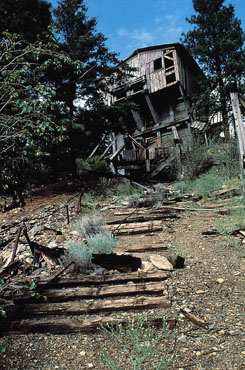Browse "Things"
-
Article
Nickel
The major contemporary use for nickel is as an alloying agent. Nickel is present in some 3000 different alloys that are used in more than 250 000 end-use applications. The most popular alloy in which nickel is used is stainless steel (seeIRON AND STEEL INDUSTRY).
"https://d2ttikhf7xbzbs.cloudfront.net/media/media/cfafc49e-d0f9-4512-ab8e-9ccdab8fbada.jpg" // resources/views/front/categories/view.blade.php
https://d2ttikhf7xbzbs.cloudfront.net/media/media/cfafc49e-d0f9-4512-ab8e-9ccdab8fbada.jpg
-
Article
Nickle Resolution
The Nickle Resolution, passed in 1919 by the House of Commons, directed that the practice of bestowing titles of honour by foreign governments on Canadians be discontinued. The policy was reaffirmed in 1968 by the government of Prime Minister Lester B.
"https://development.thecanadianencyclopedia.ca/images/tce_placeholder.jpg?v=e9dca980c9bdb3aa11e832e7ea94f5d9" // resources/views/front/categories/view.blade.php
https://development.thecanadianencyclopedia.ca/images/tce_placeholder.jpg?v=e9dca980c9bdb3aa11e832e7ea94f5d9
-
"https://d2ttikhf7xbzbs.cloudfront.net/media/media/89355fbd-99ec-4653-923b-3b37f428e3b9.jpg" // resources/views/front/categories/view.blade.php
https://d2ttikhf7xbzbs.cloudfront.net/media/media/89355fbd-99ec-4653-923b-3b37f428e3b9.jpg
-
Article
Nightshade
Eight species of Solanum occur in Canada, of which only S. carolinense (horse or ball nettle), found in southern Ontario, is native. The most familiar nightshade found across Canada is S. dulcamara (climbing nightshade or European bittersweet).
"https://development.thecanadianencyclopedia.ca/images/tce_placeholder.jpg?v=e9dca980c9bdb3aa11e832e7ea94f5d9" // resources/views/front/categories/view.blade.php
https://development.thecanadianencyclopedia.ca/images/tce_placeholder.jpg?v=e9dca980c9bdb3aa11e832e7ea94f5d9
-
Article
Nile Expedition
In March 1884, imperial entanglements resulted in British General Gordon becoming trapped in Khartoum, Sudan. When British General Wolseley was ordered to rescue Gordon, he requested approximately 300 Canadian boatmen for the expedition. Known as the “Nile Voyageurs,” these men handled wooden whaling boats that transported troops up the Nile River to Khartoum. The Nile Expedition (14 September 1884 to 17 April 1885) was the first time Canadians were involved in an international military mission.
"https://d2ttikhf7xbzbs.cloudfront.net/NileExpedition/NileExpedition-Collage.jpg" // resources/views/front/categories/view.blade.php
https://d2ttikhf7xbzbs.cloudfront.net/NileExpedition/NileExpedition-Collage.jpg
-
Article
Nine Hour Movement
The Nine Hour Movement was an international phenomenon, taking place in Canada between January and June 1872. The movement’s goal was to standardize shorter working days. Though this particular mandate was unsuccessful, the movement did have an impact, including setting the foundation for the Canadian Labor Union.
"https://d2ttikhf7xbzbs.cloudfront.net/media/media/74917b1f-8a36-49c3-99fd-4cf328a0bfa3.jpg" // resources/views/front/categories/view.blade.php
https://d2ttikhf7xbzbs.cloudfront.net/media/media/74917b1f-8a36-49c3-99fd-4cf328a0bfa3.jpg
-
Article
Niobe Day
Since 2014, Niobe Day has been celebrated every year on 21 October by the Royal Canadian Navy. It commemorates the entrance of HMCS Niobe, one of Canada’s first two warships, into Halifax Harbour on 21 October 1910. Niobe, which had been purchased from Britain, was the first Canadian warship to enter Canadian territorial waters. Before 2014, the Canadian navy marked Trafalgar Day every 21 October in commemoration of the British victory at the Battle of Trafalgar (1805).
"https://d2ttikhf7xbzbs.cloudfront.net/HMCSNiobe/HMCS Niobe entering Halifax on Trafalgar Day 1910.jpg" // resources/views/front/categories/view.blade.php
https://d2ttikhf7xbzbs.cloudfront.net/HMCSNiobe/HMCS Niobe entering Halifax on Trafalgar Day 1910.jpg
-
Article
No. 8 Company – Canadian Forestry Corps
No. 8 Company, Canadian Forestry Corps (CFC) was the second Black unit formed in the First World War, after No. 2 Construction Battalion. From November 1918 to March 1919, No. 8 Company improved and repaired airfields and roads in northern Belgium and Germany, providing valuable support to the Royal Air Force (RAF).
"https://d2ttikhf7xbzbs.cloudfront.net/No8CompanyCFC/No8-Co-CFC_WarDiary_Dec1918.jpg" // resources/views/front/categories/view.blade.php
https://d2ttikhf7xbzbs.cloudfront.net/No8CompanyCFC/No8-Co-CFC_WarDiary_Dec1918.jpg
-
Macleans
Nobel Peace Prize 1997
Jody Williams celebrated her 47th birthday last Thursday at her private retreat in Vermonts Green Mountains, a "beautiful, modern home with lots of glass," as she describes it. There is a beaver pond out back and wild turkeys in the surrounding woods.This article was originally published in Maclean's Magazine on October 20, 1997
"https://development.thecanadianencyclopedia.ca/images/tce_placeholder.jpg?v=e9dca980c9bdb3aa11e832e7ea94f5d9" // resources/views/front/categories/view.blade.php
https://development.thecanadianencyclopedia.ca/images/tce_placeholder.jpg?v=e9dca980c9bdb3aa11e832e7ea94f5d9
-
Article
Nobel Prizes and Canada
The Nobel Prizes are awarded annually for achievements that have significantly benefitted humankind. The prizes are among the highest international honours and are awarded in six categories: physics, chemistry, physiology or medicine, literature, peace, and economic sciences. They are administered by the Nobel Foundation and awarded by institutions in Sweden and Norway. Sixteen Canadians have won Nobel Prizes, excluding Canadian-born individuals who gave up their citizenship and members of organizations that have won the peace prize. (See also Canadian Nobel Laureates.)
"https://d2ttikhf7xbzbs.cloudfront.net/TCEImages/dreamstime_xl_127967744.jpg" // resources/views/front/categories/view.blade.php
https://d2ttikhf7xbzbs.cloudfront.net/TCEImages/dreamstime_xl_127967744.jpg
-
Macleans
Nobel Prizes
This article was originally published in Maclean’s magazine on October 26, 1998. Partner content is not updated. Relations between the two men are cool, bordering on icy, as could be expected between leaders who represent opposite sides in the religious and political struggle that has bathed Northern Ireland in blood for three decades.
"https://development.thecanadianencyclopedia.ca/images/tce_placeholder.jpg?v=e9dca980c9bdb3aa11e832e7ea94f5d9" // resources/views/front/categories/view.blade.php
https://development.thecanadianencyclopedia.ca/images/tce_placeholder.jpg?v=e9dca980c9bdb3aa11e832e7ea94f5d9
-
Article
Noise
Noise denotes unwanted or unmusical sounds, especially those that are random or irregular. The attitude that noise is not conducive to the well-being of sentient creatures is as old as history.
"https://development.thecanadianencyclopedia.ca/images/tce_placeholder.jpg?v=e9dca980c9bdb3aa11e832e7ea94f5d9" // resources/views/front/categories/view.blade.php
https://development.thecanadianencyclopedia.ca/images/tce_placeholder.jpg?v=e9dca980c9bdb3aa11e832e7ea94f5d9
-
Article
Non-Partisan League
The Non-Partisan League was an agrarian protest movement imported into Canada from North Dakota in 1915. The league became a political force in the Prairie provinces after its 1916 victory in the North Dakota state election. A number of leading urban radicals, including J.S.
"https://development.thecanadianencyclopedia.ca/images/tce_placeholder.jpg?v=e9dca980c9bdb3aa11e832e7ea94f5d9" // resources/views/front/categories/view.blade.php
https://development.thecanadianencyclopedia.ca/images/tce_placeholder.jpg?v=e9dca980c9bdb3aa11e832e7ea94f5d9
-
Article
None Is Too Many
Written by Irving Abella and Harold Troper, None Is Too Many: Canada and the Jews of Europe 1933–1948 (published in 1982), documented antisemitism in the Canadian government’s immigration policies as they applied to European Jews fleeing persecution from Nazi Germany. The phrase “none is too many” entered the Canadian political lexicon largely because of this book. Even before its publication, the book played a crucial role in changing the Canadian government’s policies toward refugees, such that the government of Joe Clark welcomed Vietnamese refugees then referred to as the “Boat People.”
"https://d2ttikhf7xbzbs.cloudfront.net/media/media/6d356bb1-8262-40a1-a024-3e8d3226a9da.jpg" // resources/views/front/categories/view.blade.php
https://d2ttikhf7xbzbs.cloudfront.net/media/media/6d356bb1-8262-40a1-a024-3e8d3226a9da.jpg
-
Article
Nonmedical Drug Use
Drug Use, NonmedicalAlthough drug use generally refers to the nonmedical use of psychotropic (mind-affecting) drugs - eg, cannabis (marijuana and hashish) - opiate narcotics (eg, heroin and morphine), amphetamines, cocaine, hallucinogens (eg, LSD, psilocybin and mescaline) and volatile solvents (including certain fast-drying glues, fingernail-polish removers and petroleum products), most drug-related problems in Canada derive from use of alcohol and tobacco. While some of these drugs have legitimate medical uses, their social use is generally considered...
"https://development.thecanadianencyclopedia.ca/images/tce_placeholder.jpg?v=e9dca980c9bdb3aa11e832e7ea94f5d9" // resources/views/front/categories/view.blade.php
https://development.thecanadianencyclopedia.ca/images/tce_placeholder.jpg?v=e9dca980c9bdb3aa11e832e7ea94f5d9
